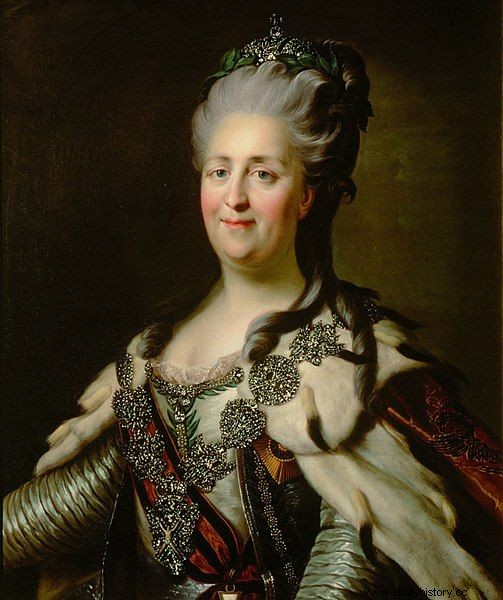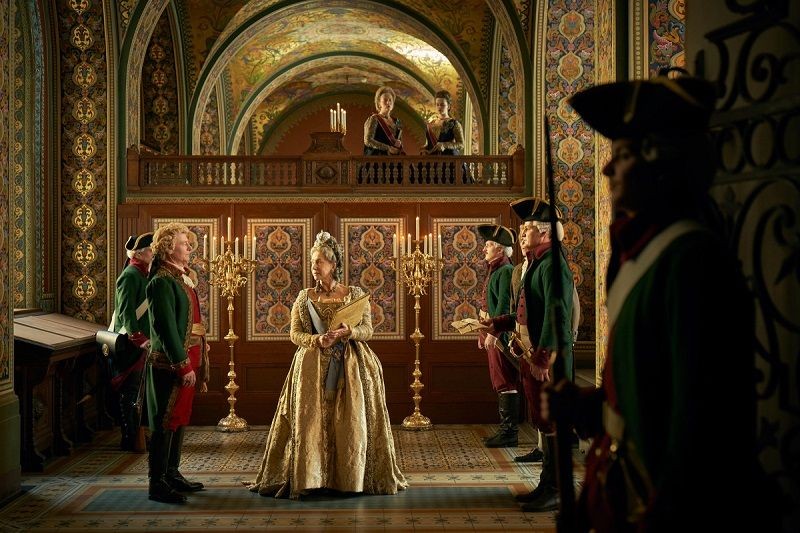For some, a ruthless schemer, for others, the mother of the nation. An eloquent lady and unused lover. Reformer and despot. In the biography of Catherine the Great, considered one of the most outstanding rulers in history, many secrets and surprising, because not obvious facts are written. Both from the world of politics and the royal bedroom. There was no shortage of spice in the tsarina's life…
Her real name was Zosia. Exactly Zofia Fryderyka Augusta. The place of her conception was neither Moscow nor St. Petersburg, but Szczecin. It was in this city that on May 2, 1729, the future monarch of Russia was born. Zofia became Catherine when she converted to Orthodoxy and then married Piotr Ulryk, later Tsar Peter III. The bright and sensitive princess of German origin relatively quickly adapted to the reality of the court. Although she has reportedly never managed to get rid of a Germanic accent, she has absolutely loved her new homeland.
The coup princess
Love - defined as erotic passion, concern and attachment to loved ones or a romantic relationship - was indeed extremely important in the life of the tsarina. She retained her undoubted temperament until the very end of her long reign, because it must be remembered that Sophia, who became Catherine, sat on the throne for 34 years. During this period, she significantly reformed education, creating the first school for girls in Russia, although we will also remember her as a co-author of the partitions of Poland. However, the eastern empire was also in danger of collapsing - many times -.
In July 1762, there was a huge rebellion in the army. Tsar Peter III - considered a weak, clumsy and openly criticized leader - was removed from power, and only after a week was murdered. The official cause of death was the hemorrhoidal colic attack, but it is no secret that the coup d'état was planned by his underappreciated spouse. The act of murder was allegedly carried out by Grigory Orlov, an influential officer of the tsarist guard, and privately the lover of Catherine the Great. Extremely important, although he was one of many.
Emotional gameplay and despots lovers
The tsarina was able to influence her subjects. For example, through administrative reforms and efficient state management, the evidence of which can be found in the Manifesto on Economic Freedom or Gramot on Urban Rights and Comforts. It enjoyed the social recognition of the peasantry, reducing the obligations of the poorest state towards the church, but it also aroused fear, especially after the uprising of Jemieljan Pugachev, when it brutally suppressed the inclinations of the rebellious peasantry. Thousands of participants in the would-be revolution were hanged then . The monarch was ruthless.

Catherine the Great was famous for having many lovers
And demanding. Capricious. And at the same time always insatiable ... no wonder that her biography contains traces of many lovers. One of them was Piotr Sałtykow, count and military man. Intelligent, well-read, temperamental. The fruit of this romance was most likely Paul I, heir to the throne, son of Catherine and - officially - the child of Peter III. Lev Naryshkin, chamberlain of the court, another favorite of the tsarina, used to meow in front of the chamber of the most powerful woman in Russia at that time, asking to be admitted to the bed. The ruler greeted him sometimes in a male costume, probably showing her domination and place in the row.
Katarzyna's lover was also Stanisław Poniatowski, whom she met in 1755. In the future - when each of them was already on the throne - they owed each other mutual support. Although difficult, Polish-Russian relations could be cemented by the birth of a child. The alleged father of Anna Piotrowna, prematurely, because her daughter Catherine the Great and Tsar Peter III, who died only at the age of 2, was Stanisław Poniatowski, the then Saxon MP.
The aforementioned Grigory Orlov aroused in the ruler not only excitement, but also an increasing political ambition. A valued representative of the army, a participant in the overthrow of Tsar Peter III, apparently had inexhaustible energy and physical strength, which he used not only on the battlefield. One of the most important lovers of the tsarina was certainly Grigory Potemkin. The Russian field marshal, commander-in-chief in the war with Turkey in 1787-1792, became one of the main characters in the historical series "Catherine the Great" broadcast by HBO.
The truth of the time, the truth of the screen - the new incarnation of the Tsarina
A period of increasing anxiety. Turbulent politics. Court intrigues, gusts of passion. Russia under Catherine the Great in the second half of the 18th century provides the perfect backdrop to tell an exciting story. The leitmotif is politics, but above all love. Understood in very different ways.
Helen Mirren, playing the title despot and reformer, showed the complexity of the character. While exercising undivided rule over the entire Empire, she had to take care of what was, but also what would be. A difficult, actually toxic relationship with his son, the future heir to the throne, negotiating with Minister Nikita Panini, finally maintaining fragile alliances with the Orlov brothers, and above all an affair with Potemkin, who in the series is considered not only a lover, but a truly beloved man. Nothing lasts forever though.

Catherine the Great
Potemkin, who could not afford to show his feelings in public, knew about it. However, he took care of his own interests, expanding the political sphere of influence, and, moreover, he also checked all subsequent candidates for Katarzyna's bed slaves. Both physically, to be sure that they will be able to satisfy the sexual desires of the monarch, but also in a political context. Potemkin, with the help of trusted comrades, scanned the political biographs of future lovers - after all, no one wanted spies at court or in the bedroom. Anyone who satisfied the tsarina received ... the Order of the White Eagle, i.e. the oldest and highest state decoration of the Republic of Poland . Whatever the case, it is an expression of disgrace to the symbol. Katarzyna was not, however, one of the most ordinary rulers.
The series portrays the political power, genius in planning and managing the Russian empire, but also the dissolute life of one of the greatest monarchs in history. The four episodes of "Catherine the Great" arouse admiration with their form, extremely intricate dedication of historical scenery, and content. The portrait of the tsarina - a mature, in her own way very sensitive, but at the same time calculating woman - is genuinely fascinating. Both in the context of politics and the royal bedroom. Because the tsarina's life was full of spice…
Bibliography:
- R. K. Massie, Katarzyna the Great. Portrait of a woman , Mark 2012.
- A. Andrusiewicz, Katarzyna the Great - truth and myth , World of Books 2012.
- The Diaries of Empress Catherine II , comp. W.A. Serczyk, MG Publishing House 1990.
- E. Stachniak, Katarzyna the Great. Power Game, Znak Literanova 2012
